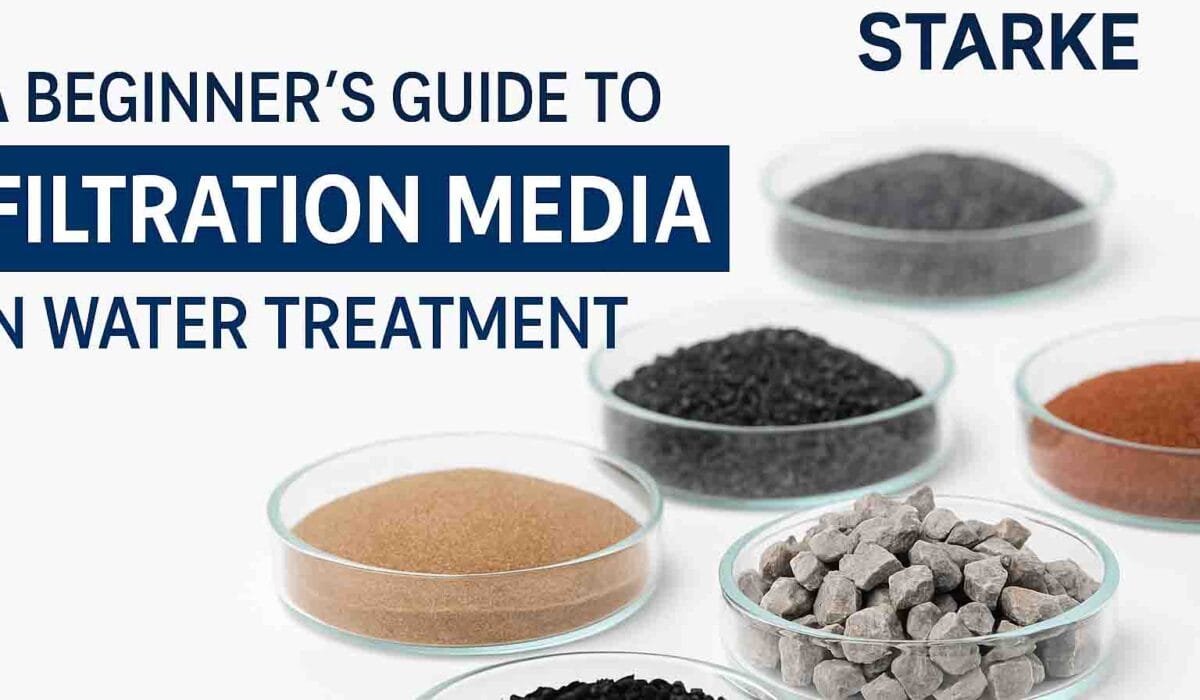A Beginner’s Guide to Filtration Media in Water Treatment
Clean water doesn’t happen by accident it’s the result of well-designed filtration systems and the right filter media.
If you’re just entering the world of water treatment, understanding the role of filtration media is your first big step. In this blog, we’ll break it all down from what filter media is, to how to choose the right type for your application.
Let’s dive into this beginner’s guide to filtration media in water treatment.
What Is Filtration Media?
Filtration media is the material inside a filter that physically or chemically removes contaminants from water. It can trap particles, absorb chemicals, remove iron, neutralize pH, or target specific impurities.
The performance of any sand filter, multimedia filter, or pressure vessel depends directly on the quality and suitability of the media used.
Common Types of Filtration Media
1️⃣ Silica Sand
Most widely used media
Ideal for removing suspended solids and turbidity
Effective Size: 0.45 – 0.70 mm (for STP/ETP)
Uniformity Coefficient (UC): <1.5 for optimal performance
👉 Used in: STPs, ETPs, swimming pools, drinking water plants
2️⃣ Activated Carbon
Made from coconut shell or bituminous coal
Removes chlorine, odor, taste, color, and organics
High iodine value = higher adsorption capacity
👉 Used in: RO pre-treatment, drinking water, industrial processes
3️⃣ Manganese Dioxide (MnO₂) / Starmnox
Removes iron, manganese, and hydrogen sulfide
High-purity MnO₂ offers better oxidation capacity
👉 Used in: Borewell water filtration, iron/manganese treatment plants
4️⃣ Purozite (Zeolite Replacement)
Highly porous synthetic media for TSS & turbidity
Excellent alternative to natural zeolite
👉 Used in: STP tertiary treatment, multimedia filters, greywater reuse
5️⃣ Garnet
Dense, angular mineral used as a bottom layer
Improves filtration depth and supports upper media
👉 Used in: Multi-layer filters for industrial and municipal plants
6️⃣ Anthracite
Coal-based media with high durability
Filters fine particles and prevents clogging
👉 Used in: Multimedia filters, surface water treatment
7️⃣ Calcite
Naturally occurring calcium carbonate
Used for pH correction in acidic water
👉 Used in: Drinking water treatment, RO post-filtration
How Do Filtration Media Work?
Filtration media work through:
Mechanical filtration: Traps suspended particles based on size
Adsorption: Chemical bonding of contaminants to media (e.g., carbon)
Oxidation-reduction: Removes iron/manganese (e.g., MnO₂)
Ion exchange: Used in resin-based media (not covered here)
How to Choose the Right Filter Media
Here’s a quick guide based on your water treatment goal:
| Target Contaminant | Recommended Media |
|---|---|
| Turbidity / TSS | Silica Sand, Purozite |
| Chlorine / Odor | Activated Carbon |
| Iron / Manganese | Manganese Dioxide (Starmnox) |
| pH Correction | Calcite |
| Fine Sediments | Anthracite |
| Deep Filtration | Garnet + Sand Combo |
Tip: Always base your media selection on inlet water quality reports and system design.
Filter Media Sizing Terms You Should Know
Effective Size (D10): The mesh size at which 10% of particles are smaller
Uniformity Coefficient (UC): Ratio of D60/D10; <1.5 is ideal
Specific Gravity: Helps with backwash layering
Porosity: Indicates void volume for trapping particles
Maintenance: When to Replace Filter Media?
| Media Type | Typical Lifespan |
|---|---|
| Sand | 3–5 years |
| Carbon | 1–2 years |
| MnO₂ | 5–10 years |
| Purozite | 4–6 years |
| Garnet | 7+ years |
| Calcite | 6–12 months |
Remember: Always monitor pressure drop, flow rate, and water quality for early signs of failure.
Building a Multi-Media Filter? Use This Layering Sequence:
Gravel (bottom)
Garnet (coarse)
Sand
Anthracite or Purozite (top)
Activated Carbon (optional topmost)
Proper layering improves filtration efficiency and backwash performance.
Final Takeaway
Filtration media may look like just grains in a tank but they’re the workhorses of your entire water treatment system.
Choosing the right type, size, and configuration can drastically improve water quality, extend system life, and lower operating costs.
If you’re unsure where to start, trust Starke Filter Media we help clients across 25+ countries optimize their filtration systems with expert advice and globally certified media.
Need help choosing the right media for your project?
Email: info@starkefiltermedia.com

